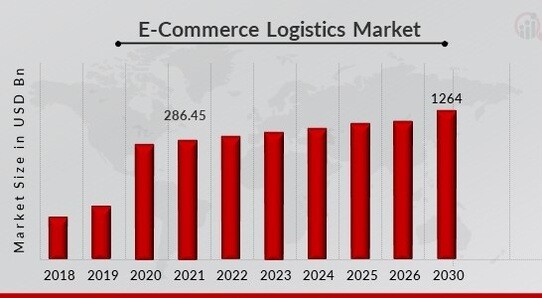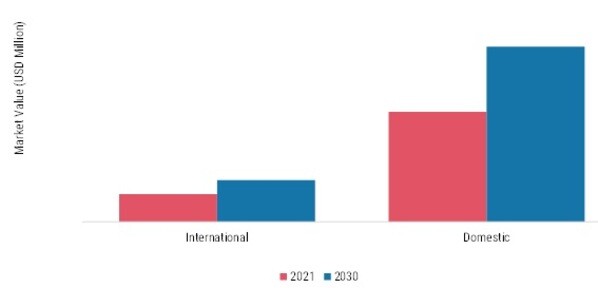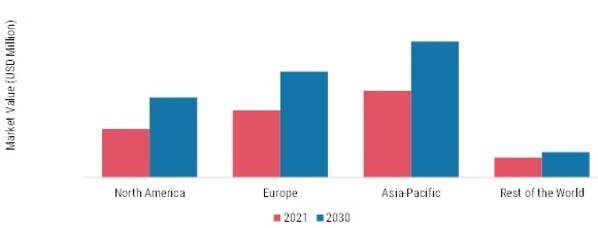

- Global Market Outlook
- In-depth analysis of global and regional trends
- Analyze and identify the major players in the market, their market share, key developments, etc.
- To understand the capability of the major players based on products offered, financials, and strategies.
- Identify disrupting products, companies, and trends.
- To identify opportunities in the market.
- Analyze the key challenges in the market.
- Analyze the regional penetration of players, products, and services in the market.
- Comparison of major players’ financial performance.
- Evaluate strategies adopted by major players.
- Recommendations
- Vigorous research methodologies for specific market.
- Knowledge partners across the globe
- Large network of partner consultants.
- Ever-increasing/ Escalating data base with quarterly monitoring of various markets
- Trusted by fortune 500 companies/startups/ universities/organizations
- Large database of 5000+ markets reports.
- Effective and prompt pre- and post-sales support.
Global E-Commerce Logistics Market Overview
E-Commerce Logistics Market Size was valued at USD 286.45 billion in 2021. The E-Commerce logistics industry is projected to grow to USD 1264 billion by 2030, exhibiting a compound annual growth rate (CAGR) of 14.86% during the forecast period (2024 - 2030). Owing to the acceptance of the enlarged E-commerce business and transforming technology in the transportation business. E-Commerce Logistics Market Trends
E-Commerce Logistics Market Trends
- Development of the E-commerce Logistics
The enlarged businesses worldwide coupled with the fast delivery services have been the key driving factors for the growth of the E-commerce logistics market. The larger base of companies that are working on the new technology for delivering the goods to the end customers supports the market to grow even more. Nowadays, customers are more likely to choose the items to be delivered to their doorsteps which has further developed the supply chain prominently. Additionally, the ever-increasing cross-border trade and e-commerce activities have further enlarged the growth of E-commerce in logistics. The speedy development of countries around the globe has resulted in an increased number of imported and exported goods. Thus, the rising incidences of logistics through e-commerce have widened for decades. For instance, in June 2022, the Fedex company announced its expansion in China with its all-new operational center for widening its business in Asia Pacific. However, the cost incurred in the shipments and services for delivering the goods is considered very high. Besides it, e-commerce companies are managing to gain higher profits with the rising demand for e-commerce logistics resulting in the E-Commerce Logistics Market revenue.
E-Commerce Logistics Market Segment Insights
Service Type Insights
The E-Commerce Logistics Market segmentation is based on warehouse and transportation. Wherein the Warehouse has been further bifurcated into air /express delivery, freight/ rail, and trucking/overload, and transportation is divided into mega centers, hubs/delivery centers, and returns processing centers. Considering the service type the transportation segment accounts for the larger market share owing to a large number of mega centers and delivery hubs operating in the segments. The enlarging population around the globe stimulated by the exponential requirements of individuals has made the necessity of receiving day-to-day goods which have further penetrated the demand for more convenience of logistics. This has been delivered smoothly with the rail, road, and air transport facilities. The mentioned instances have well supported the provision of E-commerce Logistics revenue through various services.
For instance, In May 2021, The Logismart and EshopWeDrop Company aligned together for joint ventures to facilitate the transportation and delivery of high-level parcels from Germany to various parts of Europe. This collaboration of the two giant companies further works on cross-border delivery services.
February 2024: The demand for faster deliveries continued to grow in 2024. Several startups and established companies are offering same-day delivery services in major cities. This trend is putting pressure on traditional logistics providers to adapt and offer faster delivery options to remain competitive
Operational Areas Insights
The E-Commerce Logistics Market segmentation is based on international and domestic operational areas. The domestic segment has accounted for the largest market share. Owing to domestic operations like e-commerce and shipments of the daily required goods. The shipment provided by international companies in the domestic market is considerably high, providing the largest number of deliveries within the market. The companies like Amazon, FedEx, Alibaba, and Flipkart are a few of the major companies that prominently provide domestic services. Additionally, on other hand, the shipment services provided cross-border have also increased since ization which has ultimately supported the E-commerce logistics industries around the globe.
February 2021: The Hong Kong-based Logistics company has announced its joint venture with ESG company. The business joint ventures between these companies will enhance the business of E-commerce in the countries like Taiwan, Hong Kong, and China. Joint Venture will be managing the retail order fulfillment.
Figure 2: E-Commerce Logistics Market, by Operational Area, 2021 & 2030 (USD Billion) Source: Secondary Research, Primary Research, MRFR Database, and Analyst Review
Source: Secondary Research, Primary Research, MRFR Database, and Analyst Review
Additionally, the high importance of e-commerce logistics is witnessed in commodity transport. The requirement of transporting essential commodity items like sesame, wheat, and others are key aspects where logistics play important. Hence the importance of these logistics has been increasing day by day.
E-Commerce Logistics by Regional Insights
By Region, the study segments the market into North America, Europe, Asia-Pacific, and the Rest of the World. The Asia-pacific E-commerce logistics market has accounted for the high growth as compared to the other regions. The E-commerce logistics market has been flourishing due to the high-end investments by the major players in China, India, Japan, and Korea. Developed nation around the globe has constantly increased their import and export capacities, due to the ever-growing need for goods. Moreover, owing to innovation and technology the demand has raised for E-logistics systems.
For Instance, in 2020, the CEVA company enlarged its business by establishing a new business in Vietnam. Further, the major countries studied are the U.S., Canada, Germany, France, the UK, Italy, Spain, China, Japan, India, Australia, South Korea, and Brazil.
In January 2022, The Allianz group of companies and European logistics company VGP have announced their joint venture for targeting the value EUR 2.8 billion asset value. The joint venture will further develop its prime logistics assets in Germany, the Czech Republic, Hungary, and Slovakia
Figure 3: E-COMMERCE LOGISTICS MARKET SHARE BY REGION 2021 (%) Source: Secondary Research, Primary Research, MRFR Database, and Analyst Review
Source: Secondary Research, Primary Research, MRFR Database, and Analyst Review
North America E-Commerce Logistics Market accounted for the second-highest-growing market in 2021 and is expected to exhibit steady growth. This is attributed to the large number of players operating in the E-commerce logistics market. Considering the developed countries of the European market like Germany’s E-commerce Logistics market and France’s E-commerce logistics market have recorded notable growth in the overall development of the E-commerce logistics industry owing to recent technological development. Moreover, the emergence of E-commerce websites in the region coupled with low-cost shipping is one of the primary factors that are driving growth for the E-logistics market. The rising sales of foreign goods imported from various countries around the globe have influenced the growth of the region positively.
Europe’s E-Commerce Logistics Market accounts for the second-largest market share after Asia Pacific due to the availability of new e-commerce solutions, with advanced technology development projects. Further, the Germany E-Commerce Logistics Market held the largest market share, and the UK E-Commerce Logistics Market was the fastest-growing market in the European region. However, the covid-19 pandemic has further badly affected the E-logistics market. Which is trying to recover from the impact. Some of the challenges faced by the E-logistics market have been the rising cost of transportation and the lack of management at the higher level. Though the E-logistics market has numerous opportunities lined up with the appropriate strategies.
Additionally, the Asia Pacific market has been one of the prominent regions for the E-commerce logistics market. Owing to the rising online purchase and incorporation of the latest AI-based technology has expanded profitability in the E-logistics market. Adding to this, rapid urbanization and continuous foreign investment have been crucial elements in the enlarged development of logistics systems. Major countries in the region like China, India, Japan, Korea, and Thailand are accounted for the majority of development in various industries like agriculture, automobiles, and metal industries. The products produced through these industries are further exported to the market wherein the logistics market is the center of the transportation systems. The aforementioned are the key factors that make the Asia Pacific the largest market in the E-commerce logistics market.
E-Commerce Logistics Key Market Players & Competitive Insights
Major market players are spending a lot of money on R&D to increase their product lines, which will help the E-Commerce Logistics Market grow even more. Market participants are also taking a range of strategic initiatives to grow their worldwide footprint, including new development, contractual agreements, mergers and acquisitions, increased investments, and collaboration with other organizations. Competitors in the e-commerce logistics industry must offer cost-effective services to expand and survive in an increasingly competitive and rising market environment. Moreover, the enlarged needs of consumers ly have been motivating manufacturers around the globe to advance their production capacities. This has been resulting in better opportunities for key players in the logistics market to provide the requested goods and materials on the time. For this, key player are further developing their logistics market through updated technology and systems.
In July 2023, Walmart announced that it would be investing $10 billion in its supply chain over the next five years. The investment is aimed at improving the speed and efficiency of Walmart's logistics network.
Key Companies in the E-Commerce Logistics Market include
- DHL International
- Gati Limited
- Fedex Corp.
- Aramex International
- Kenco Group
- Ceva Holdings
- United Parcel Services
- XPO Logistics
- Clipper Logistics, among others
E-Commerce Logistics Industry Developments
In August 2023: Alibaba announced that it would be investing $15 billion in its logistics infrastructure over the next three years. The investment is aimed at making Alibaba's logistics network more efficient and sustainable.
In August 2023: UPS announced that it would be acquiring Parcelforce Worldwide, the UK's second-largest parcel delivery company. The acquisition is expected to give UPS a stronger foothold in the European e-commerce market.
In February 2022: Singapore Airlines and DHL company went into a partnership for expansions of the business partnership for enhancing the logistics opportunities.
In January 2022: I-Power company announced its launch of new E-commerce logistics along with the Box Harmony company. For this joint venture, iPower will promote $50,000 for a 40% equity interest in the JV with an option to purchase up to an additional 20%.
E-Commerce Logistics Market Segmentation
E-Commerce Logistics Service Type Outlook
- Warehouse
- Transportation
E-Commerce Logistics Operational Areas
- International
- Domestic
E-Commerce Logistics Regional Outlook
- North America
- US
- Canada
- Europe
- Germany
- France
- UK
- Italy
- Spain
- Rest of Europe
- Asia-Pacific
- China
- Japan
- India
- Australia
- South Korea
- Australia
- Rest of Asia-Pacific
- Rest of the World
- Middle East
- Africa
- Latin America
Leading companies partner with us for data-driven Insights
Kindly complete the form below to receive a free sample of this Report
Tailored for You
- Dedicated Research on any specifics segment or region.
- Focused Research on specific players in the market.
- Custom Report based only on your requirements.
- Flexibility to add or subtract any chapter in the study.
- Historic data from 2014 and forecasts outlook till 2040.
- Flexibility of providing data/insights in formats (PDF, PPT, Excel).
- Provide cross segmentation in applicable scenario/markets.





















